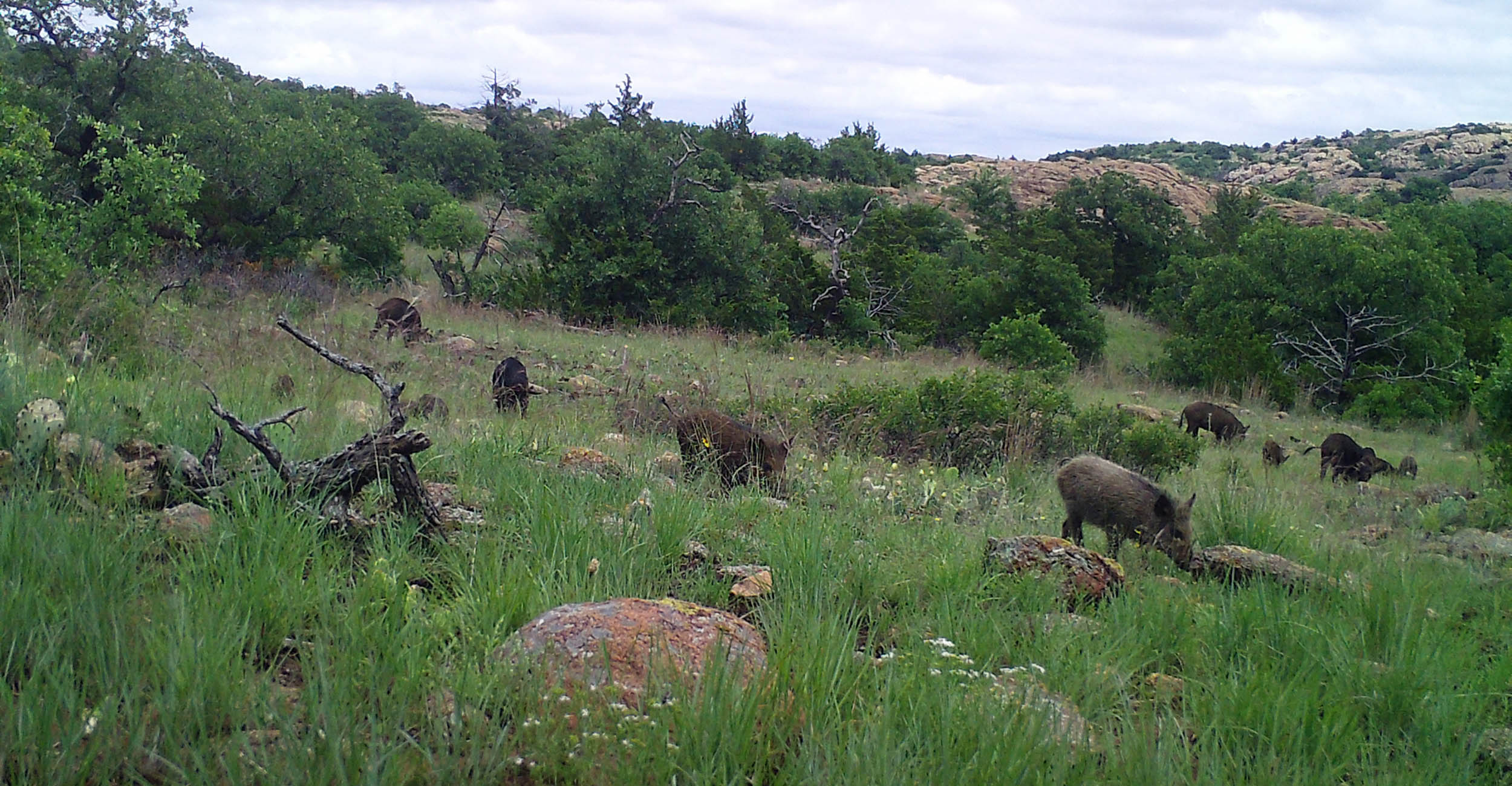
Southern region land-grant researchers look for solutions to feral hog problem
Friday, March 17, 2023
Media Contact: Alisa Boswell-Gore | Agricultural Communications Services | 405-744-7115 | alisa.gore@okstate.edu
Researchers at land-grant institutions in the southern region of the United States are working hard to stop more than $1 billion in economic damages each year.
Around 9 million feral hogs have been reported in 35 states. Feral hogs were almost unheard of in Oklahoma 40 years ago but can now be found all over the state, according to the U.S. Department of Agriculture’s Animal and Plant Health Inspection Service. They cause an estimated $1.5 billion in economic damages annually across the U.S. They eat crops, dig up trees and devour food that other animals depend on.
Hogs can significantly damage native flora and fauna through their rooting behaviors and facilitate the spread of invasive plants, alter soil and water resources and limit regeneration of native plants. Habitat degradation by feral hogs can influence the diversity and occurrence of native wildlife communities. Feral hogs also carry and transmit diseases that pose significant risks to the health of many wild and domestic animals.
“Damage from feral hogs has become a widespread phenomenon across many areas of the United States, causing a staggering amount of damage,” said Scott Senseman, associate vice president of OSU Ag Research. “A collaborative, multi-state effort is likely the only way to mitigate the problem.”
Oklahoma
The Wichita Mountains Wildlife Refuge is a key refuge for native bison conservation, and feral hogs were documented at WMWR as of 1993. Despite considerable control efforts and costs, feral hogs have persisted, and the ecosystem impacts have not been assessed.
Oklahoma State University’s research goal is to estimate feral hogs’ space use patterns within the refuge and assist refuge managers by evaluating the effects of the species on the diversity of the native mammal community.
Remote game cameras at 99 sites within the refuge will document how feral hogs and other native mammals use specific wildlife spaces. Small mammals have been live-captured at a quarter of the sites to document small mammal diversity. Analysis of results from the first field season is in progress.
Sampling will be repeated in May through August 2023. Researchers will evaluate what environmental factors drive the variety of ways that feral hogs use the refuge. Native animals will be analyzed to account for species that may have been missed. After the 2023 sampling is completed, data and research results will be provided to natural resource managers and the scientific community.
Arkansas
The Arkansas Forest Resources Center in Monticello led a multi-state survey of 4,500 landowners to gauge economic damage feral hogs cause to croplands, forestlands, pasturelands and livestock.
The study estimated feral hog damages over five years across all of Arkansas and Louisiana as well as 38 counties in east Texas. According to the survey, private landowners’ average agricultural cropland damage in the past five years was $28 per acre in both Arkansas and Louisiana and approximately $25 per acre in east Texas. The most reported feral hog damage to agricultural crops involved corn, soybeans, rice, wheat, hay, silage and forage crops.
Louisiana
The Louisiana Department of Wildlife and Fisheries estimates the feral hog population in the state to be more than 900,000. A Louisiana State University AgCenter survey estimated damages to commodity production at $66 million and other non-production losses at almost $25 million.
The LSU AgCenter and Department of Chemistry are working on a bait-and-delivery system to help reduce the feral hog population. The soft baits, which are swallowed by the hogs, contain sodium nitrite, a common food additive in products like bacon, that is lethal to hogs.
The ag center team plans to commercialize the bait system once they are satisfied with its performance. The product will then go through federal and state approval processes.
South Carolina
The South Carolina Wild Hog Task Force was created to coordinate education, research and management efforts to reduce problems associated with wild hogs in the Palmetto State. The task force is comprised of 21 different state and federal agencies, agriculture and natural resources associations, and conservation groups led by Clemson University and the USDA Animal and Plant Health Inspective Service Wildlife Services.
Clemson supports the South Carolina Wild Hog Task Force to coordinate education, research and management programs to reduce damage caused by wild hogs in South Carolina. Future research will focus on effective methods to reduce wild hog damage and track damage in the state.
For information on how to deal with feral hog issues, visit OSU Extension Fact Sheets.
